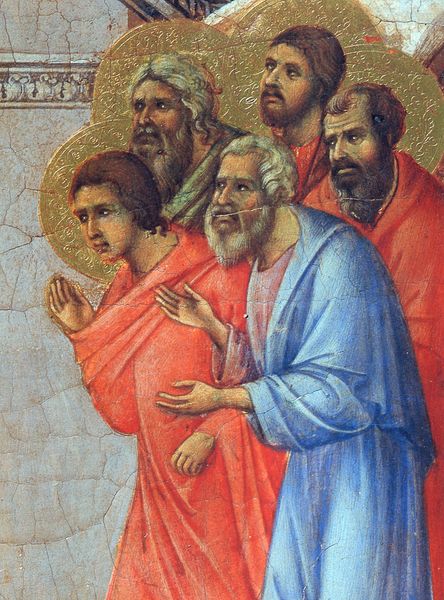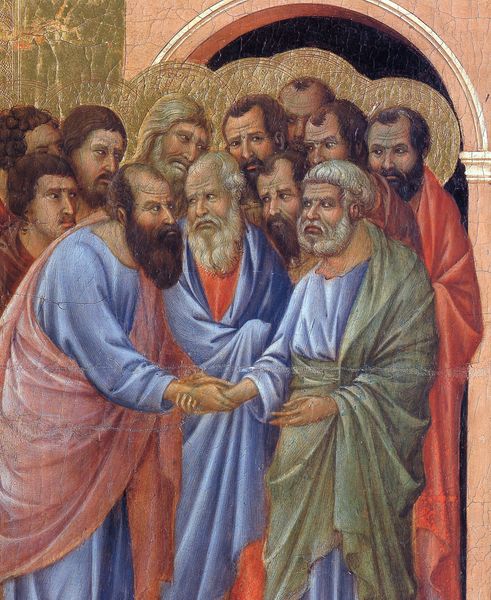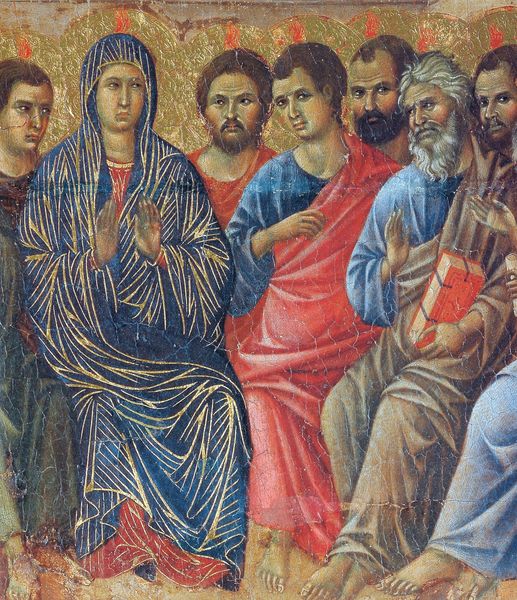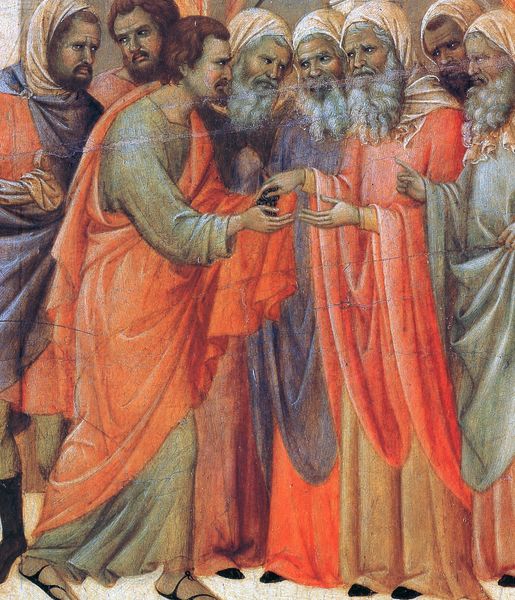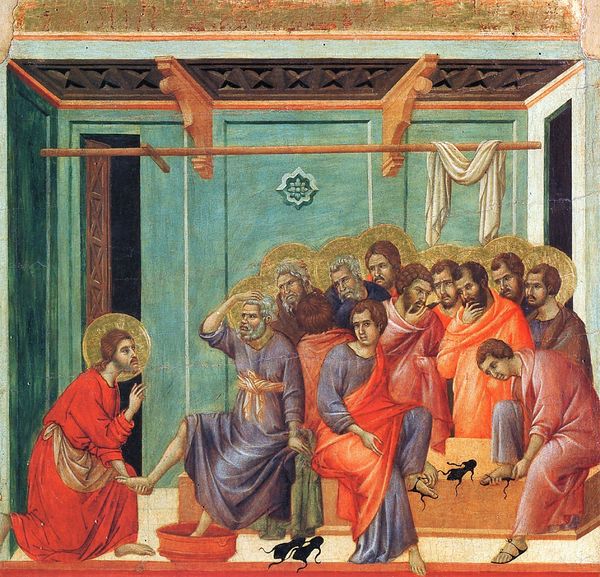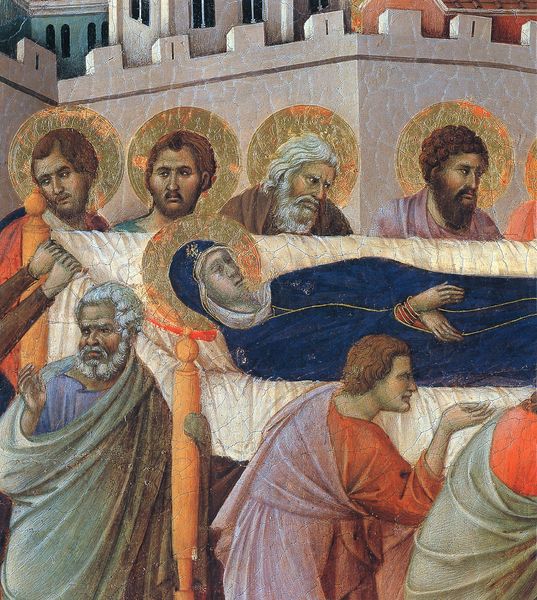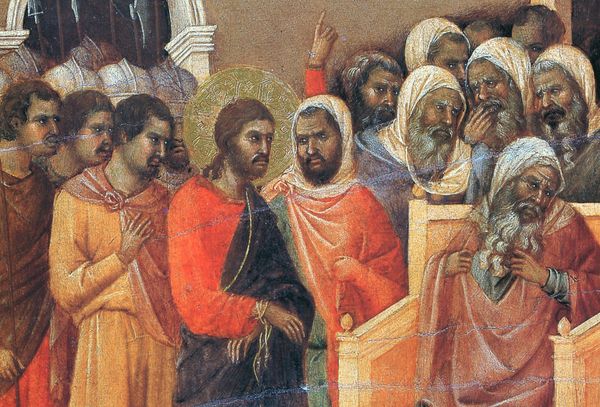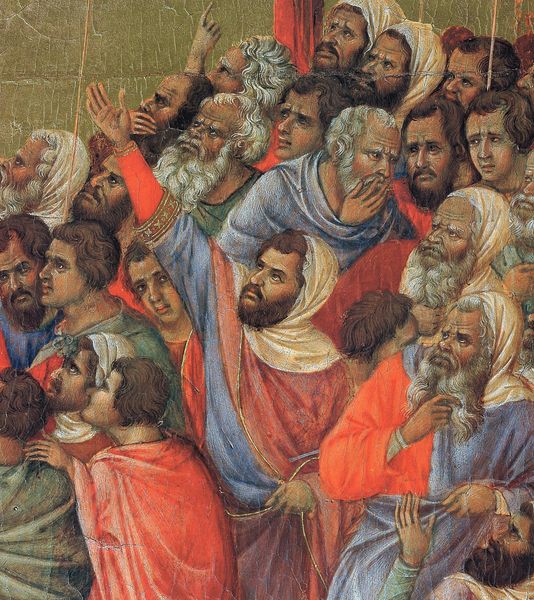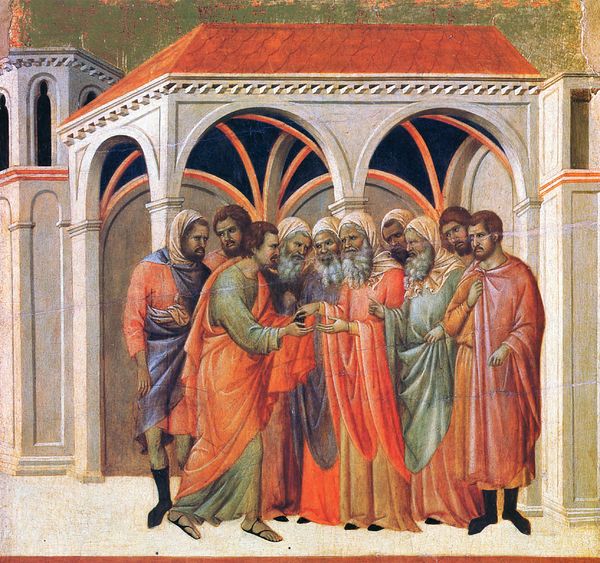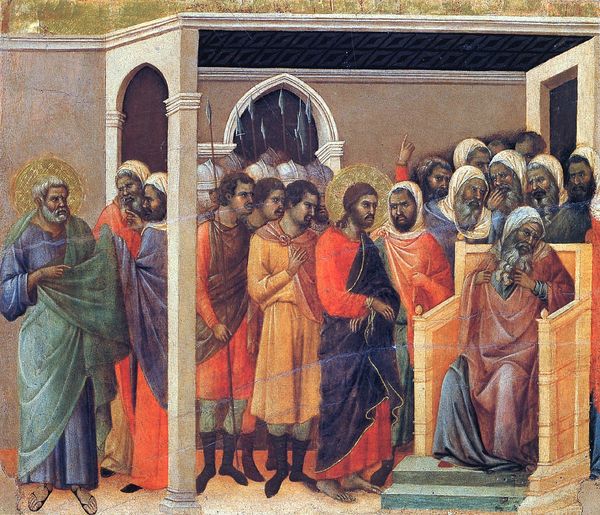
panel, tempera, painting
#
medieval
#
panel
#
narrative-art
#
tempera
#
painting
#
sienese-school
#
figuration
#
portrait reference
#
group-portraits
#
christianity
#
history-painting
#
academic-art
#
italian-renaissance
Copyright: Public domain
Curator: Looking at this fragment by Duccio, “Appearance of Christ to the Apostles”, dating from around 1311, I immediately feel like I’ve walked into a solemn gathering. There's such a striking density to the composition, this mass of faces and drapery... Editor: Absolutely, it’s arresting. Those faces are just swimming in a sea of gold. And though it’s only a fragment, you can sense the weight of the history painting genre that would explode in subsequent generations. Curator: Yes, this painting originally formed part of the Maestà, Duccio's grand altarpiece for the Siena Cathedral. Think of it, each panel brimming with its own narrative, its own set of tensions… And yet, here, detached from the larger piece, the fragment offers something special. Editor: The intensity is almost amplified. It’s also interesting how the politics of the time seeps into the art, how art becomes almost propagandistic in a civic or religious sense. Siena's identity was interwoven with its religious institutions, so this altarpiece must have meant everything. Curator: Propaganda, maybe, but delivered with so much visual poetry! Those soft, flowing lines of the robes – particularly the blues and reds – are quite wonderful. There is this sort of deep tenderness alongside that rigid, Byzantine formality. Editor: Exactly! Duccio plays on these emotional cues using colors that have their roots in sacred symbolism. Blue traditionally relates to the Virgin Mary and spirituality, which adds a layer of solemnity that the audience in Siena likely connected to their daily experiences. It makes me think about the museum's role today, trying to resurrect those intended interpretations, or allowing entirely new ones. Curator: Yes, this idea of bringing history into conversation with the present, while recognizing that we all inevitably impose ourselves onto it. Duccio probably would never have imagined our reflections now. The possibilities are rather fascinating, if you think about it. Editor: Absolutely. This panel presents an early exploration of Renaissance values in terms of figuration, and sets the tone for other, much later depictions of religious events in Western art. It really serves as an evocative and beautiful link.
Comments
No comments
Be the first to comment and join the conversation on the ultimate creative platform.
